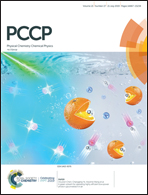Citrem–phosphatidylcholine nano-self-assemblies: solubilization of bupivacaine and its role in triggering a colloidal transition from vesicles to cubosomes and hexosomes
Abstract
Improvement of pain management strategies after arthroscopic surgery by multimodal analgesia may include the use of long-acting amide local anesthetics. Among these anesthetics, the low molecular weight local anesthetic agent bupivacaine (BUP) is attractive for use in postoperative pain management. However, it has a relatively short duration of action and imposes a higher risk of systemic toxicity at relatively large bolus doses. Bupivacaine encapsulation in lipid-based delivery systems is an attractive strategy for prolonging its local anaesthetic effect and reducing the associated undesirable systemic side effects. Here, we discuss the potential development of liquid crystalline nanocarriers for delivering BUP by using a binary lipid mixture of citrem and soy phosphatidylcholine (SPC) at different weight ratios. The produced safe-by-design family of citrem/SPC nanoparticles is attractive for use in the development of nanocarriers owing to the previously reported hemocompatibility. BUP encapsulation efficiency (EE), depending on the lipid composition, was in the range of 65–77%. In this study, nanoparticle tracking analysis (NTA) and synchrotron small-angle X-ray scattering (SAXS) were employed to gain insight into the effect of BUP solubilization and lipid composition on the size and structural characteristics of the produced citrem/SPC nanodispersions. BUP loading led to a slight change in the mean sizes (diameters) and size distributions of citrem/SPC nanoparticles. However, we found that BUP accommodation into the self-assembled interiors of nanoparticles, triggers significant structural alterations in BUP concentration- and lipid composition-dependent manners, which involve vesicle–cubosome and vesicle–hexosome transitions. The structural tunability of citrem/SPC nanoparticles and the implications for potential applications in intra-articular BUP delivery are discussed.



 Please wait while we load your content...
Please wait while we load your content...